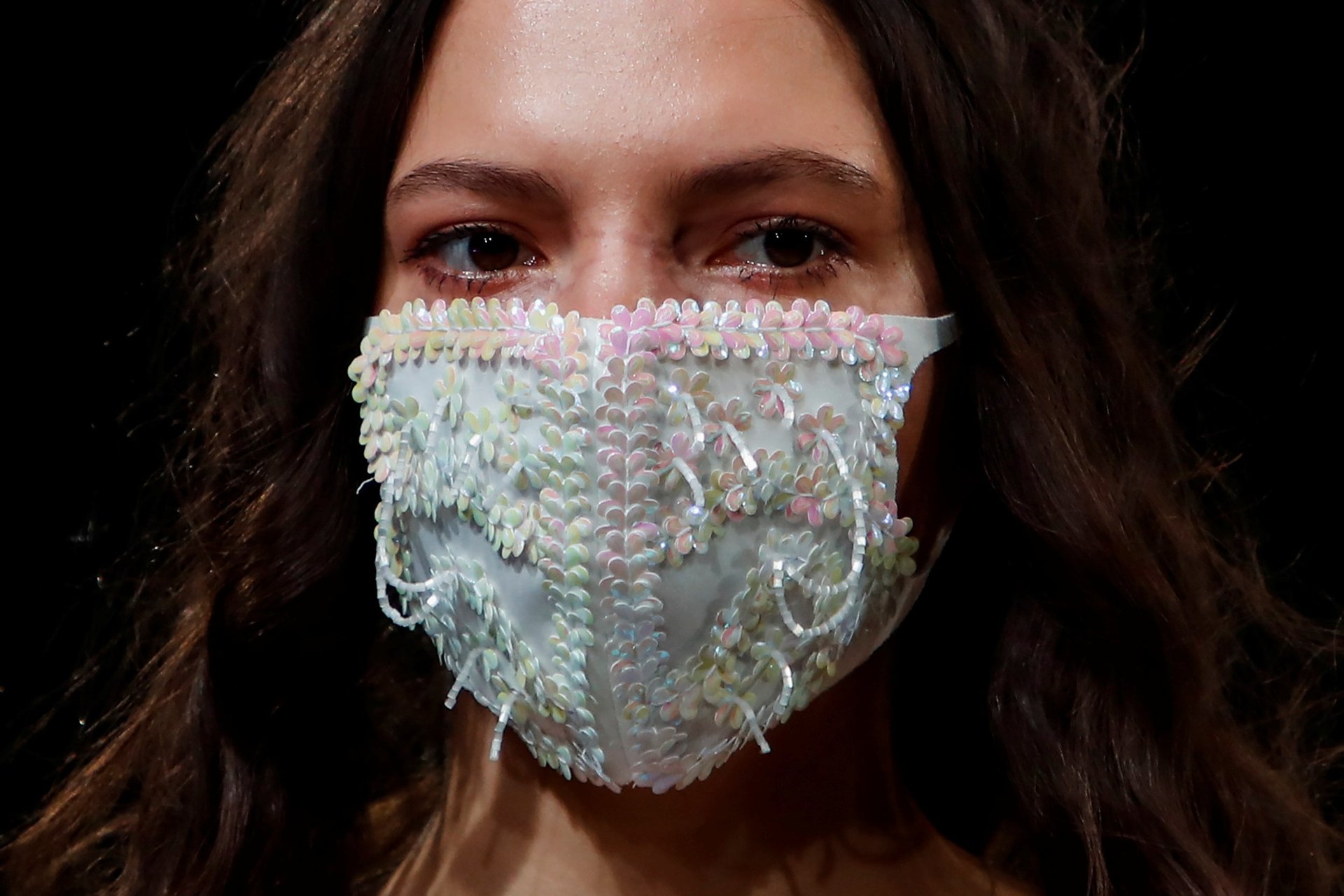Cloth face masks will soon have certification labels
Early on in the pandemic in the US, face masks were hard to come by. As leaders encouraged donations of high-quality, medical-grade masks to healthcare workers, evidence was growing that all people needed to cover their noses and mouths to prevent the transmission of Covid-19. So folks got creative, sewing their own masks out of fabric they had lying around, or using a gaiter or bandana. Others had masks shipped from Amazon or a favorite local retailer, crossing their fingers that what arrived would fit.


Early on in the pandemic in the US, face masks were hard to come by. As leaders encouraged donations of high-quality, medical-grade masks to healthcare workers, evidence was growing that all people needed to cover their noses and mouths to prevent the transmission of Covid-19. So folks got creative, sewing their own masks out of fabric they had lying around, or using a gaiter or bandana. Others had masks shipped from Amazon or a favorite local retailer, crossing their fingers that what arrived would fit.
In the months since, researchers have become increasingly certain that the coronavirus is airborne, making face coverings a necessity. The way we mask up, though, hasn’t really evolved. Besides N95 masks, which are required to filter out 95% of all airborne particles larger than 0.3 microns, most face coverings don’t have to meet any particular filtration standards. “We want everyone to be wearing masks…[but] there’s a huge variability how effective cloth masks are,” says Linsey Marr, a civil and environmental engineer and aerosols expert at Virginia Tech. “Things are ad hoc right now, and the public has no guidance.”
Fortunately, such a standard will likely soon exist. ASTM International, an organization that develops and sets all kinds of technical standards, is working with a number of industry and government partners to establish guidelines for the filtration efficacy of “barrier face coverings” (what ASTM calls face masks) sold by private industry. In the end, masks will bear some sort of label certifying they’ve met the guidelines.
Consumers need such a standard because there’s a lot of variation in how well face coverings stop particles outside a medical setting. According to one 2008 study, N95 masks reduce exposure to respiratory viruses by 99%; surgical masks by 74%; and homemade tea towel masks by 58%. Another study, published this month, found that single layers of several common fabrics—polyester, cotton, silk, and linen—were especially ineffective because they are made of porous materials. In June, the World Health Organization published recommendations for a multi-fabric, three-layer mask, but few products sold today look anything like that design.
The task group writing the face mask standard has not yet come to a consensus on how effective the masks should be at trapping particles, according to Jennifer Marshall, program manager for public safety standards coordination at the National Institute of Standards and Technology (NIST), one of the project’s stakeholders. “One of the concerns is how much is leaked through and around the barrier and the best way to measure it,” says Marshall.
Usability is also critical factor. “There is a balance to blocking particulates and breathability, and ultimately masks need to be comfortable and wearable,” Marshall says, especially since the masks are intended for the general public to wear during daily activities like going to the grocery store.
A final version of the standard will identify which labs are certified to run the tests, and set requirements for design and labeling. Similar to the WHO’s recommended design, the new standards may include things like the type and durability of material, Marshall says, as well as what portion of the face it should cover. ASTM’s efforts started in July, and Marshall says a standard could be published before the end of 2020.
Having such a standard wouldn’t kill the market for homemade masks that has proliferated on sites like Etsy, which sold $346 million worth of the products between March and August. “This standard is targeted…at the commercial manufacturers producing the vast majority of masks being sold today,” says Marshall, noting that such a standard is also voluntary. “The standard could provide helpful information to guide smaller manufacturers and makers, so they might produce a competitive product. Consumers will ultimately determine if standard-conforming masks are needed in their specific circumstance or application.”
Marr is glad that such a standard is being put into place. “It’s good that so many stakeholders are involved, but this makes the process very slow,” she says. “Hopefully, the group will come up with something that is grounded in good science.”